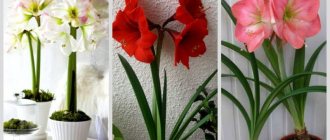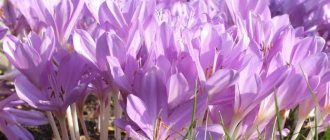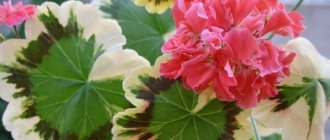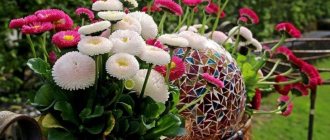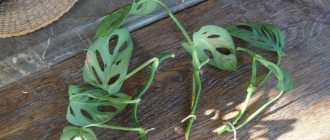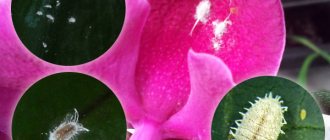How to care and conditions of detention
Temperature and location
During the period of active plant growth (approximately from April to September), the temperature is maintained at +20-+24 degrees. During the rest period, so much heat is no longer required - it is enough to maintain the air temperature within 10-15 degrees above zero.
As for lighting, bulbous plants prefer a lot of light during active development.
But it is still worth protecting leaves and flowers from direct sunlight.
Humidity and watering
From April to early September, regular moderate watering is carried out at intervals of 2-3 per week. Swampiness should not be allowed to form. And in winter, the soil is moistened every 1-1.5 weeks.
High air humidity is not suitable for bulbous plants, but overdrying should also not be allowed.
Soil and pot for growing
The container is chosen slightly larger than the onion - about 2-3 cm larger in diameter. If you choose a pot that is too large, the above-ground part will stop growing until the bulbs fill the space.
You can choose ready-made soil for indoor flowering plants. Be sure to add a drainage layer.
How to plant?
The bulb is planted in the usual way. First, a small depression is made in the ground into which the planting material is placed. There is no need to completely cover the bulb with soil, otherwise rotting will begin.
After planting, the substrate is watered moderately and the pot is placed in a warm, bright place.
Read about indoor bulbous plants: albuca spiralis, amaryllis, wallota, hemanthus, hyacinth, hippeastrum, gloriosa, drimiopsis, zephyranthes, Indian onion, calla, clivia, crinum, narcissus, nerine, oxalis, lily, scylla, freesia, eucharis. The catalog of all types is here.
Transfer
For the first three years, transplantation is carried out annually, and then as the bulb grows. The optimal period is September-October. If the bulb has no leaves, place the pot in a cool place until the first leaves appear.
When transplanting, inspect the bulb for rotting or other diseases. If necessary, cut off the affected parts and sprinkle the cut areas with crushed coal.
Reproduction
The best method of propagation at home is vegetative. During the 2-3rd year of plant growth, young bulbs grow in the pot. So they are placed in a separate container. Large specimens bloom already in the first year after planting, smaller ones – in 2-3.
What to feed?
When feeding bulbous plants, it is better to underfeed them than to overfeed them. Plants most need potassium, phosphorus and nitrogen. You can choose complex fertilizers containing these three elements.
Spring forcing
Large, heavy bulbs are selected for forcing. Before placing in the ground, the scales are removed from the planting material. The procedure can be performed at any time of the year, it all depends on when you need to get flowering (the whole process takes up to 4-5 months). The main thing is to provide plenty of lighting. Most often, forcing is carried out in such a way that the plant blooms during the March holidays.
In the section “Indoor bulbous flowers” you can find the specifics of care and cultivation for each species.
Not every gardener has bulbous plants in his collection due to the peculiarities of caring for them. But it’s worth trying to plant a variety once, then subsequent questions and difficulties will not arise.
Features of bulbous indoor plants
Plants that are commonly called bulbous plants are quite diverse, but they all have a bulb, which they need to accumulate nutrients. The leaves extend from the bulb and form a rosette.
Important! For normal growth and flowering they need diffused light.
Most bulbous plants have a clearly defined dormant period. At this time, they shed all their foliage for a while. Some flowers that form a thickened root system retain their foliage throughout the year, but there are very few of them.
Like most indoor flowers, bulbous flowers do not tolerate frost. When the foliage dies, the bulb remains in the flowerpot. During this period, plants are practically not watered and fertilizers are completely excluded. But some flowers, such as cannas, require completely different care in winter. Indoor varieties have perennial bulbs that form more and more flower stalks every year.
You may be interested in:
Preserving tulip bulbs to expel them by March 8 On March 8, there are two most popular flowers that are given to women - these are, of course, mimosa and tulips. If...Read more...
Crinum and amarcrinum (x Amarcrinum)
Crinum is a large genus, including about 180 species. Crinums grow along the banks of reservoirs in tropical and subtropical zones of different continents. Many types of crinum are very decorative, some are used for landscaping aquariums. Crinums are distinguished by their large flower size, shape and color of petals. The most spectacular are Powell's hybrid crinum (C. x powellee) , as well as amarkrinums - hybrids of crinum and amaryllis. Among the most decorative hybrids of amarkninum: x A. memoria-corsii, x A. traubii .
Why don't they bloom
Often gardeners are faced with a problem common to all bulbous plants - houseplants refuse to bloom. Usually this problem is associated with deficiencies in care and, most often, with the lack of a quality rest period.
In addition, the following possible reasons for the lack of flowering:
- keeping at too low a temperature (do not forget that all bulbs are heat-loving);
- lack of light;
- lack of fertilizing;
- pest damage, diseases.
To cope with the problem, you need to mobilize and intensify care for the plant. It is important to create comfortable conditions for the bulbous flower: warmth, sufficient lighting, nutritious, loose soil; watering should be done moderately and only with warm water.
Also organize regular fertilizing with complex formulations. And to stimulate the plant to bloom and activate its vitality, spray the flower with the following preparations:
So, we got acquainted with the most popular and decorative representatives of bulbous plants used in indoor floriculture. The choice is rich - in the article we listed only some of the worthy representatives of bulbous plants; in fact, a much larger number of them are suitable for home breeding. Graceful bulbs will become a real decoration of the interior, will make any apartment more comfortable and will delight you with magnificent flowering.
Bovieya
The plant also comes from South Africa and is also called “Zulu potato” or “sea cucumber”. It is valued for its elegant appearance, and although it does not bloom, it can delight you with its lush greenery all year round. Some types of boviea flower, but this fact happens so rarely that the plant is usually bred simply for its exotic greenery (see photo).
The bulbs are medium-sized - usually 5-7 cm in diameter, covered with scales. In the spring, after planting, a juicy, strong, bright green peduncle grows from the bulb, having a branched, curly shape. The length of the peduncle lashes sometimes reaches a meter, so most often the boviea is hung in a flowerpot so that the lashes hang down freely and gracefully.
Care is simple - of all the bulbous plants, boviea is perhaps the most unpretentious. It grows well in both sun and shade, however, it must be protected from direct midday sun. It does not need frequent watering - for successful growth and development of the flower, even in summer, one watering every 7-10 days is enough.
Gloriosa
This bulbous plant belongs to the vines; its climbing stem can decorate the interior of a living room or hallway. Gloriosa flowers are especially beautiful. It is difficult to convey in the photograph how much their petals resemble flames dancing in the wind.
If you want to propagate this indoor plant, you must take into account that the tubers of Gloriosa are poisonous, so you cannot even replant it without taking serious precautions. So despite the beautiful name, gloriosis is very insidious.
Hippeastrum
There are several dozen types of hippeastrum, each of which has its own characteristics. Some species are confused with Amaralis, but the shape of their bulbs is different; in Hippeastrum they are more rounded.
Hippeastrum Leopolda has huge flowers, scarlet in the center, white on the outside, which bloom in the fall. Spotted hippeastrum, which blooms in late winter to early spring, has claw-shaped, creamy petals covered in red spots. There are varieties of this houseplant that have striped flowers, as well as lemon yellow ones.
It is important to know that if hippeastrum is not given a period of rest, it will not bloom.
Small-bulbous perennial primroses
In the Northern regions, small-bulbous perennials are best planted in a flowerbed at the end of August. In September there are already frosts, and unrooted bulbs may be damaged. Bulbous primroses look beautiful in the form of small clumps, so several of them are placed in one hole. The planting depth should correspond to the diameter of the three bulbs. When planting, add ash or potassium fertilizers; bulbs have a negative attitude towards organic matter.
Pushkinia prolesciformes
Puschkinia scilloides from the Asparagus family grows well in the tree trunks of fruit trees in the garden. It will decorate any flower bed or rock garden. The height of the peduncle is 20 cm, the green fleshy leaves are 15 cm. The corollas of the flowers are white or pale blue. Flowering begins in May. Pushkinia bulbs have a thin covering layer that does not protect well from drying out, so it is not advisable to dig the plant out of the soil for a long time.
Flowers of Pushkinia proletaria in racemose inflorescences smell pleasant
Iris reticulum
The plant shown in the photo called reticulated iris (Iris reticulata) is a bulbous perennial with a short growing season. It needs to be planted correctly, choosing a suitable site, and dug up on time. It is better to cover the autumn planting site with roofing felt or other protective material so that the irises do not get wet. The bulbs need to be dug up in the spring two weeks after the end of flowering, otherwise they may rot.
Read more Blue and blue perennials: photos and names, top blooming all summer
Reticulated iris bulbs do not like excess moisture in the soil.
Muscari
These small bulbous plants range from 10 to 25 cm in height and have many ornamental varieties. The place for planting muscari (Muscar) from the Asparagus family should be sunny, where the snow melts early. The soil needs to be nutritious, filled with rotted organic matter. Fertilizing with complex mineral fertilizer is carried out in the spring during the budding period.
Muscari or mouse hyacinth is planted in autumn
Snowdrops
Snowdrops (Galanthus) from the Amaryllis family are bulbous perennials that are very unpretentious. There are about 20 species and several varietal forms, differing slightly in leaf length and flower shape. Galanthus are planted in July or August in sun and partial shade.
For snowdrops, choose an area with loose soil and without stagnant water
Scilla
This small-bulbous perennial is easy to grow in a garden bed and in an indoor pot. It reproduces well by self-sowing, is resistant to shade and cold, and is immune to disease. The corollas of the flowers are most often blue, but can be white or pink. Infusions of Scilla are used in folk medicine to treat flu and colds.
Scilla from the Asparagus family blooms in early spring in March
Chionodoxa Lucii
Chionodox Lucia (Scilla luciliae) is a low, bulbous plant from the Scilla genus with blue flowers and green leaves. There are varietal forms with white, light blue and purple corollas, collected in an inflorescence raceme. For autumn planting, choose slightly shaded or well-lit areas with loose, well-drained soil.
Translated from Greek, the name of this bulbous plant means “snow glory” or “snow pride”. Bell-shaped flowers with six recurved petals are among the first to bloom in spring. The best place for planting is a rock garden or alpine hill with humus-rich soil. For beautiful flowering, plants are fed in early spring in the snow with complex fertilizers.
After the leaves wither, the Chionodoxa bulbs are dug up and stored in peat.
Lily
Many people are accustomed to considering the lily as a garden bulbous plant. In fact, there are types of lilies that are suitable for indoor floriculture. They are no less beautiful and fragrant than garden ones. You should not keep a pot of lily in the bedroom just because its aroma may seem too heavy. For the same reason, lilies are not suitable for a nursery. But the living room is the place for her. An indoor lily will surely attract attention and arouse the admiration of your guests.
Hyacinth
Hyacinth is one of the most popular bulbous indoor plants. It can take away from December to March, depending on what period the bulbs were planted. In some species, the bulb produces only one peduncle, but the flowers on it do not fade for up to three weeks, filling the room with a pleasant aroma. Quite large (up to 5 cm) flowers appear waxy and can have a wide variety of colors, which depend on the type of hyacinth. By the way, there are types of hyacinth that have smaller flowers, but there are several flower stalks from each bulb, which also looks very beautiful. If you look at the photo, it becomes clear why hyacinth is in demand among gardeners.
Colchicum
Another name for colchicum is colchicum, which is also very well known to flower growers. This is a beautifully flowering bulbous plant, quite suitable for indoor floriculture.
Colchicum reaches a height of only 20 cm, so it does not take up much space. At the same time, it has delicate and rather large flowers that are pleasing to the eye. Having seen colchicum in the photo, many will probably want to contemplate it, and this is quite possible on their windowsill, since the plant is very common. It blooms all summer, which is also good news.
Zephyranthes
This bulbous plant is also called “upstart”. This name is due to the fact that Zophyranthes flowers bloom almost immediately after the appearance of the peduncle. The flowering period is from early spring to mid-summer. Petals of a pleasant pink color are bordered by yellow-orange stamens. It looks, as the photographs confirm, very beautiful. The flowers are solitary, about 8 cm in size, that is, quite large. Therefore, Zophyranthes is able to decorate an apartment by appearing on the windowsill in any room.
Ledeburia
This bulbous plant is represented by 16 species. The most popular among gardeners are Ledeburia coopera, whose brushes bear up to fifty bell-shaped flowers, and Ledeburia socialis, whose brushes bear up to 25 green-purple bells. Both of them are very similar to each other, so that from a photograph it is sometimes difficult to determine which variety of lideburia is depicted in it.
By the way, ledeburia leaves are also of decorative value; the main thing is not to forget to wipe them so that dust does not accumulate on them.
Amaralis
This indoor plant blooms in autumn, has an incomplete peduncle, reaching a length of 50-70 cm. From 8 to 12 large bell-funnel-shaped flowers bloom at its top. Beautiful, as seen in the photo, bright pink flowers are fragrant, filling the room with a pleasant aroma. However, this is not always good for the bedroom, so it is best to stir the amaralis in the living room or hallway. Moreover, this indoor flower belongs to the poisonous bulbous plants. If your family has small children, kittens or puppies, then add its name to the “black list”.
Amaralis leaves appear at about the same time as the peduncle. They are smooth, grooved, belt-shaped, reaching a length of half a meter.
The amaralys bulb resembles a pear covered with small scales. Every year this indoor plant produces daughter bulbs. A significant part of the year is in a state of rest.
